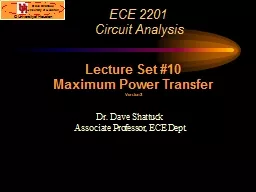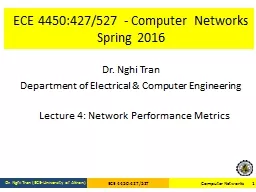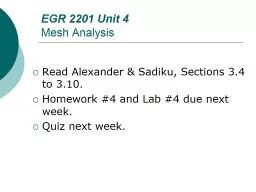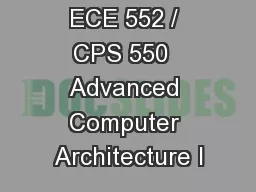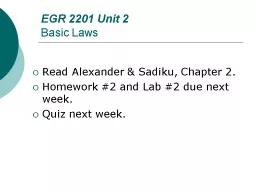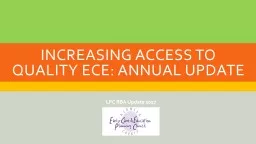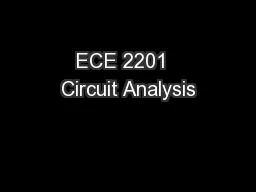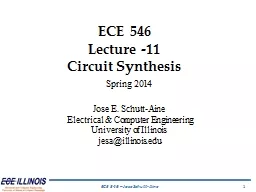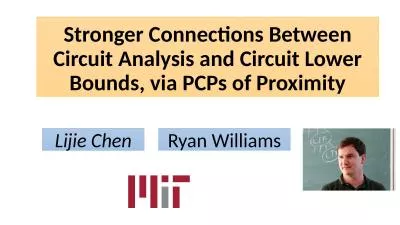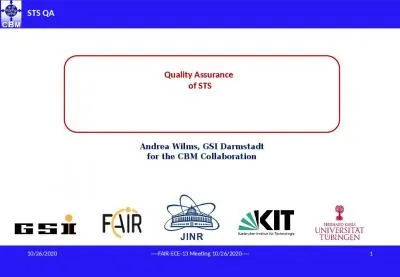PPT-ECE 2201 Circuit Analysis
Author : opelogen | Published Date : 2020-08-06
Dr Dave Shattuck Associate Professor ECE Dept Lecture Set 10 Maximum Power Transfer Version 3 Maximum Power Transfer Overview Maximum Power Transfer In this
Presentation Embed Code
Download Presentation
Download Presentation The PPT/PDF document "ECE 2201 Circuit Analysis" is the property of its rightful owner. Permission is granted to download and print the materials on this website for personal, non-commercial use only, and to display it on your personal computer provided you do not modify the materials and that you retain all copyright notices contained in the materials. By downloading content from our website, you accept the terms of this agreement.
ECE 2201 Circuit Analysis: Transcript
Download Rules Of Document
"ECE 2201 Circuit Analysis"The content belongs to its owner. You may download and print it for personal use, without modification, and keep all copyright notices. By downloading, you agree to these terms.
Related Documents

